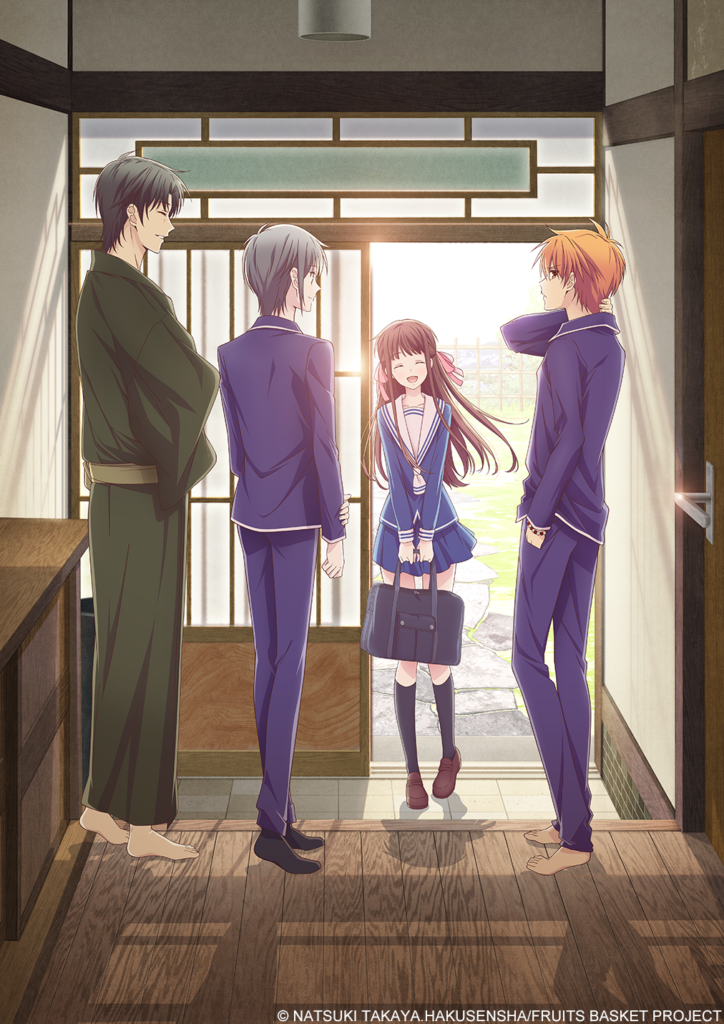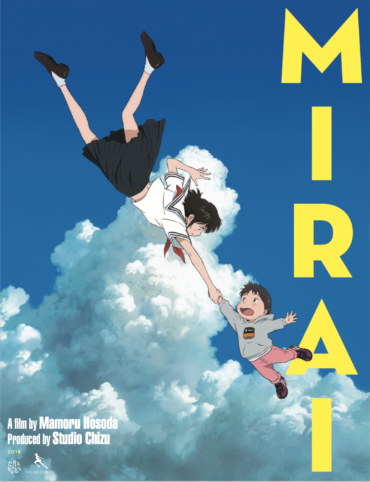Anime UK News Review of 2018 Part 1: Anime
Mirai, Mary and the Witch’s Flower, Maquia – are all anime films you probably watched at your local cinema this year on the big screen. What a pleasure to acknowledge that the growing trend for screening anime in cinemas that we noted in 2017 has gathered momentum in 2018 – as well as the growth of festivals, such as Scotland Loves Anime. And thanks (thanks?) to Netflix and Amazon Prime, the sheer volume of streamed anime to watch has grown too. In Part 1 of AUKN’s Review of 2018, our writers look back at the titles that have caught their attention this year.
Anime Streaming/Simulcast
Darkstorm:
Finally, I have more than just a ‘default’ winner in this category! At the beginning of 2018 I promised myself to try and watch more streaming anime, and luckily for me with more anime released on Netflix and Amazon Prime, I was able to. Although this faltered towards the end of the year (due to personal issues mostly) it ‘s been nice to, for once, enjoy and discuss anime as soon as it’s released, rather than love them far later and when everyone else has moved on.
Anyways, what’s my winning pick for this year? At the end of last year, I was fully expecting Cardcaptor Sakura: Clear Card to be the runaway winner, but as much as I enjoyed the series, I was disheartened by the ending and (at the time of writing) no news of further seasons. So, my winning pick is actually split between two. First up is Wotakoi: Love is Hard for an Otaku; a wonderfully fun, geeky romance that left me wanting more but for the right reasons. I wanted to spend more time with the characters and laugh with them, not to conclude a long-running mystery that left the audience unsatisfied. Plus, the music was great, the references striking into my geeky heart at the right beats, and for once we got to follow a long-term relationship as well as a blossoming new one. My other top pick would have to be a wild card (pun intended) by the name of Kakegurui, a.k.a. Compulsive Gambler. This dropped onto Netflix near the beginning of the year with little fanfare, due to being delayed quite a lot since its Japanese original release, and yet it immediately made an impression. I loved the art style, the crazy plot, the clever variations of high-risk games, and the fanservice was unique to say the least! I even went out of my way to watch the live action series when it appeared on Netflix a few months later, with even my husband taking a fancy to it! I can’t wait for the second season (for both) and hope Netflix releases it much sooner than the first season.

Demelza:
Admittedly I feel like 2018 has been quite a weak year for simulcasts. It started well in the Winter Season, but Spring and Summer were slim pickings and it’s only really now that we’re into Autumn that things have picked up. That said, I still found a lot to love this year. Like Darkstorm, I fell in love with Wotakoi for its delightful easy-going story with a loveable cast of characters, but I’m sure you’ve heard enough about that one already so here are two of my other picks from 2018. First up we have Violet Evergarden a series that Netflix actually simulcasted in the UK! I’ve always had a soft spot for Kyoto Animation series, but Violet Evergarden exceeded all my expectations with its wonderful animation and emotional story. It has ended up being one of those rare shows that I want to re-watch straight after finishing and in fact I have re-watched several episodes of Violet Evergarden since it first aired. Each one retained the emotional hold it had on me originally and almost brought me to tears. Of everything I’ve watched this year it’s definitely the one show I keep going back to and can’t forget.
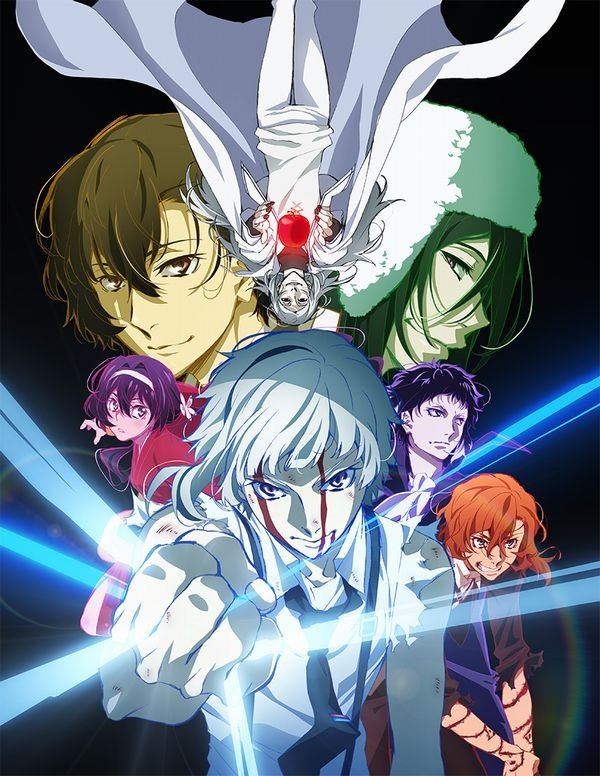
My second pick isn’t a TV series but instead a film that Crunchyroll started streaming a couple of months ago: Bungo Stray Dogs – Dead Apple. A follow-up to the popular TV anime handled by studio BONES, Dead Apple offered a thrilling adventure following the characters we’ve come to know and love over the course of two seasons of anime. Although some of my favourites among the cast (Ranpo) didn’t get nearly enough screen time, I still genuinely had a great time watching this film and it has stuck with me since. Even though the plot didn’t always make a great deal of sense, I feel that the action scenes and my familiarity with the cast managed to overcome the shortcomings. If you’re an existing fan of Bungo Stray Dogs then it’s definitely worth checking out Dead Apple before Season 3 hits!
Josh A. Stevens:
If we had to sum up the past year of streaming anime with a catchy slogan, I’d say it was easily “The Year of Netflix”. After gaining an irksome reputation from some hardcore anime fans for buying the rights to shows, then only releasing them in bingeable chunks months after broadcast, 2018 was when the streaming giant really started to show their commitment to the medium.
Only a month after the family-friendly Looney Tunes-esque Lu over the Wall charmed us in cinemas, Masaaki Yuasa performed a total tonal flip by kicking off the new year with the perfect argument for Netflix’s existence in the anime industry: DEVILMAN crybaby. A brand new adaptation of Go Nagai’s iconic dark fantasy manga Devilman, the series was a visceral delight where violence and sexual content alike went to places no traditional TV anime would be allowed. DEVILMAN crybaby offered more than just surface-level sadistic glee however, with a strong emotional foundation that cleverly threaded its way through, before revealing itself to be the most potent part of the show. One such moment left me in literal shock for the rest of the day, and has remained on my mind in the months due to its perfect, blunt execution. Combined with the fluid animation of Science SARU (Night is Short, Walk on Girl) and a stunning soundtrack by Kensuke Ushio (A Silent Voice), what more could you want? DEVILMAN crybaby was one of this year’s first anime, and in my opinion, remains the best.
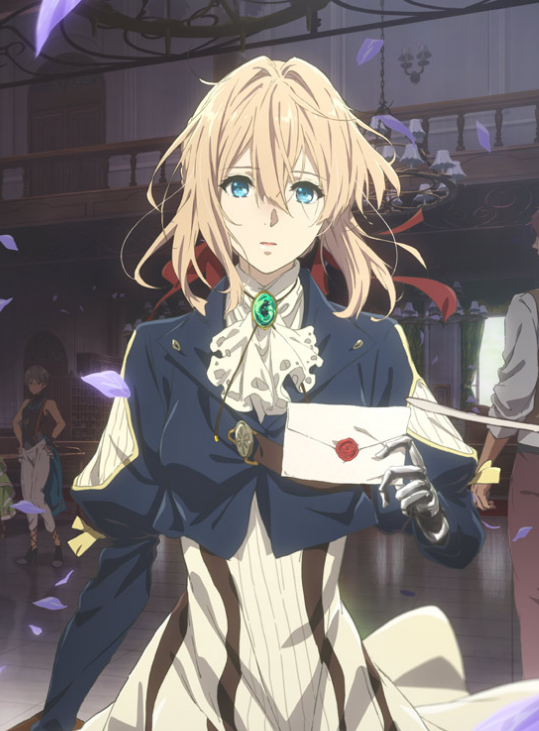
DEVILMAN crybaby wasn’t the only Anime of the Year contender to debut on Netflix that month, however, with it being followed a week later by the service’s currently-only anime simulcast: Violet Evergarden. The coming-of-age drama centers on the titular heroine, who after only knowing the life of a soldier, finds peacetime work as an “Auto Memory Doll” writing letters. However, due to the chaotic and impersonal nature of her life before, Violet lacks a fundamental skill for the job: understanding human emotions. Over the course of largely episodic stories, Violet encounters many people whose emotions she has to explore, so she can one day understand the meaning of the words spoken by her superior. Like Demelza, I found these stories to be profound, emotional experiences that often left me in tears, with the tenth episode in particular easily being the best standalone episode of all anime this year. At its heart, Violet Evergarden is a breathtaking record of life, and one of Kyoto Animation’s strongest anime series of late.
After such a phenomenal start however, I found most of the anime that followed this year to be more forgettable. While the Winter Season also featured a strong start from Studio Trigger and CloverWorks’ Sci-Fi collaboration Darling in the FRANXX, until too much time was spent on more slice-of-life aspects instead of world-building, leading to a frantic and frankly ridiculous final leg that really soured the series in many people’s eyes.
Perhaps crudely describable as “Pacific Rim but horny”, the series is set in a post-apocalyptic future where humans live in colonies under threat from “Klaxosaur” monsters, their last line of defence being the FRANXX, mechas piloted by teenage boy-girl pairs. The focal point of the story, Hiro, is a failed pilot candidate who suddenly awakens his potential when a crisis forces him to co-pilot with Zero Two, a mysterious elite with Klaxosaur blood and a reputation as a “Partner Killer”. To say exactly how the series goes off-course would be major spoilers, but while the final stretch certainly made me remember the series less fondly, Darling in the FRANXX is still good fun for what it is. At least it wasn’t another light novel adaptation.
While there are certainly a number of other shows I enjoyed during the year, like the slice-of-life comedies Karakai Jozu no Takagi-san and Comic Girls, the only other new anime that really stood out to me, was MEGALO BOX. Created to celebrate the 50th anniversary of the legendary Ashita no Joe manga the series is loosely inspired by, Megalo Box is a futuristic boxing series where competitors wear more than just shorts and gloves: the titular Megalo Boxing has fighters wear “Gear”, metal frames that pack an extra-hard punch!
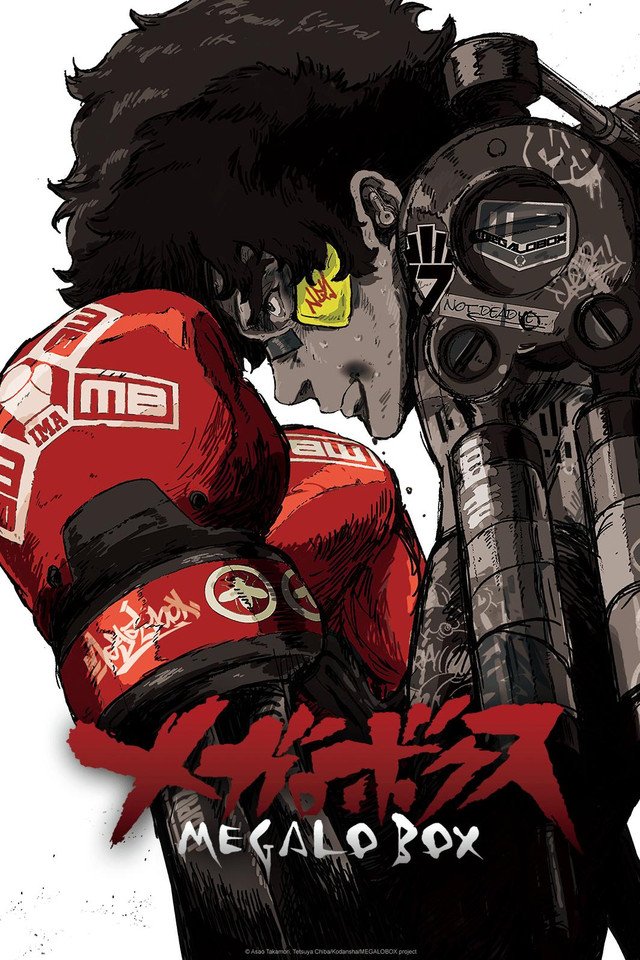
Junk Dog is an amateur from impoverished slums, who begrudgingly throws illegal fights for his crooked manager Gansaku Nambu. However, when he gets on the wrong side of renowned champion Yuri and is defeated in the ring, the sparks of rivalry ignite. Risking it all for a shot at stardom, through determination and dodgy dealings alike, he heads to the more prosperous big city to enter the pro leagues, aiming for a shot at the “Megalonia” tournament, and a rematch with Yuri.
The animation of MEGALO BOX received a Marmite reception, with a grainy aesthetic artificially aging the show in an era full of bright, high definition colours. I found this to be a perfect fit for the series’ more gritty design and tone, however. The fights are incredibly detailed and really engaging to watch, and the rivalry between Junk Dog and Yuri may be fondly remembered yet, but like FRANXX, I think this series may have missed the mark with its ending. While MEGALO BOX is too different to be called an adaptation of Ashita no Joe, the original manga’s ending is so iconic that anything but feels like the series pulled a Fuuka . Slight faults aside however, MEGALO BOX is without a doubt my favourite 2018 series from the more anime-focused services.
Onosume:
2018 has been a very interesting year for seasonal anime, one that I feel has been bookended by very strong seasons in winter and autumn, then had a mixed spring and summer. While there were some outright stinkers (Darling in the FRANXX and Island in particular), and some slight disappointments (both Cardcaptor Sakura: Clear Card and Free!: Dive to the Future didn’t quite live up to the might of their prequels) there were actually a lot of shows that I enjoyed over the year.

Live several other of our writers, I agree that Violet Evergarden is a strong contender for Anime of the Year and was the moment at which it felt Netflix had become serious about anime. With simulcasting the standard for the industry, I was previously very vocal about disliking the “boxset binge” approach that Netflix had been sticking to, so I was pleased to see them open up to simulcasts with this series. And with it being an emotionally heavy show, I feel it works best taking it week by week to allow each episode to really sink in. There were definitely a few episodes in there that emotionally broke me in a way that I had to go away and just sit in a corner for five minutes to clear my head before moving onto something else. It’s a powerful show and really one of Kyoto Animation’s best works. I know Anime Limited have the home video rights to this so I’m kind of waiting for that, but I’m interested in seeing how it all comes off on a second watch and if it still packs the same emotional punch.
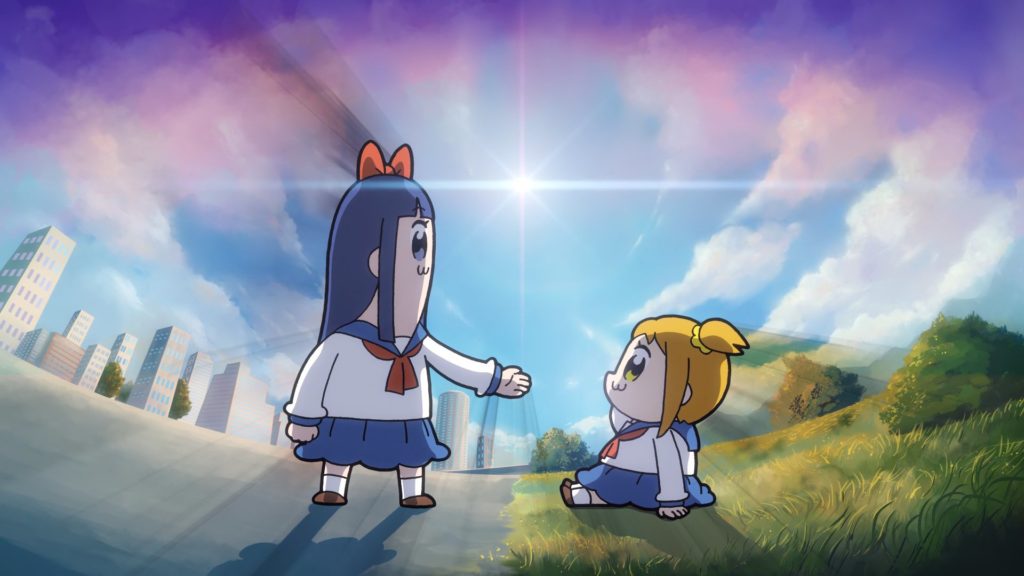
Going from cry-your-heart-out to laugh-out-loud, the winter season also brought us perhaps one of the most divisive anime of the year: Pop Team Epic. Taking a sketch show format, Pop Team shows teenage girls Popuko and Pipimi in a variety of sketches, gags and parodies that fly by in quick succession. Think the likes of Little Britain and Catherine Tate and other such sketch shows but with a Japanese twist and you get the idea.
First reactions to this were very much ‘love it’ or ‘hate it’, and at first I placed myself in the ‘hate it’ camp, as despite a funny first episode, several of its oddities didn’t gel with me, like repeating the same episode with different voice actors and the utterly stupid and purposefully badly animated Bobunemimimmi sequences. I therefore dropped it before heading off to Japan with a friend who is very much in the ‘love it’ camp, and while away they ended up convincing me to give it another shot – which I did – and suddenly with Episode 3 it just clicked. Despite a shaky start I actually ended up really enjoying it and finding some very funny sketches, from the likes of “Beef or Chicken?” resonating well with my recent air travel to “Let’s Pop Together” adding another anime shout-out to Earth, Wind and Fire. It’s definitely difficult to get into, but once you do, you can have a real blast.
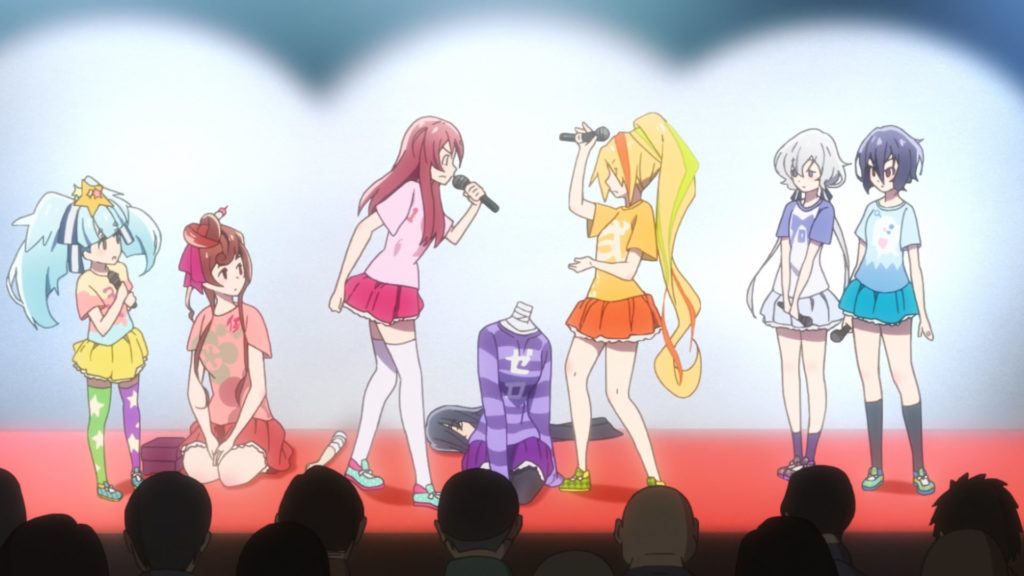
While still airing at time of writing, Zombie Land Saga has been my favourite of the Autumn Season, producing some great comedic moments and showing some great work in its characters and writing. The show sees several teenage girls from different eras of Japan’s history resurrected as zombies to become part of an idol group in order to save Saga prefecture and bring happiness to its residents.
As I mentioned in the Autumn Streaming Preview, this was very much the dark horse of this season and has continued to be one of the best, with the more recent storylines giving characters very well-handled back stories and injecting them with very human personalities. Its real strength is taking the concept of an idol show and stripping out a lot of the more serious elements and the melodrama and replacing it with fun and absurdity to give the genre a breath of fresh air. I mean, with the effort Mamoru Miyano is putting in voicing the insane producer Kotaro Tatsumi you can tell the cast is having a lot of fun working on this, and I think there’s just a mix of the right elements here that truly makes it shine.
Cold Cobra:
While I haven’t watched as many streaming shows as I’d have liked, there were a few highlights, though the big two are rather predictable (which seems to be my thing in these articles!). I will quickly mention that back in March we saw Dragon Ball Super come to a close, the last few episodes were really enjoyable, but I can’t really count that as a “2018 Streaming Show”, so…
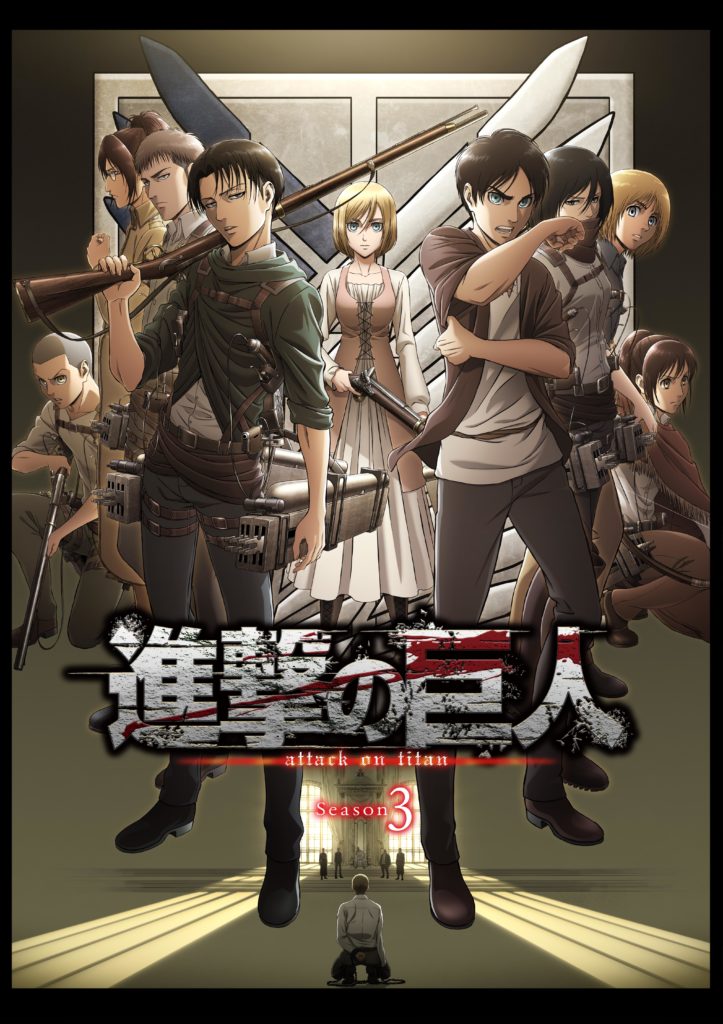
The first show that leaps out to me is Attack on Titan‘s third season, or well, technically the first half of the third season. Attack on Titan is normally touted as a show that’s all about being a grim and dark experience full of gore and giant Titans running around, so imagine my surprise when Season 3 actually features few Titans and focuses on the politics of the world and the backstory of two of the lead characters. That may not sound exciting, and perhaps several (really well animated) scenes of humans killing humans isn’t what you want out of this show, but I soon found myself more invested in it than I have been in a long, long time. As the cherry on the top of the cake, the final two episodes feature a rather gruesome and unsettling large Titan that everyone teams up to take down, so you do get some of the old AoT action at the end. In reality though, it’s all about the story, and it’s a surprisingly interesting one! Now, as for that cliffhanger…

Predictable choice #2 comes in the form of My Hero Academia, which also saw its third season air. The show continued to show it can tell a great story with a large cast and adapt the manga without inserting copious amounts of filler. The opening episode was filler that was mostly recap, and there was one episode of filler that intentionally led into the then-just-releasing film, but otherwise it was a perfectly paced and really enjoyed shonen show. Although it’s great to see Midoriya and his classmates grow, both in power and as people, the highlight of the season has to be a rather epicly animated and scored fight between All Might and his old nemesis All For One, the conclusion of which has been clipped and gif’d more times than most shows get in their entire run. After a great theatrical debut, My Hero Academia can do no wrong at the moment; let’s hope the momentum continues next year!
Ian Wolf:
Annoyingly I didn’t see much in the way of streamed anime this year, but the shows I did enjoy I turned to time and time again. For this year, there was one stand-out show for me, which was appropriate because it was a show about me. For that matter, it was about you too, and everyone else in the world. That’s because it was the anime all about the human body: Cells at Work!
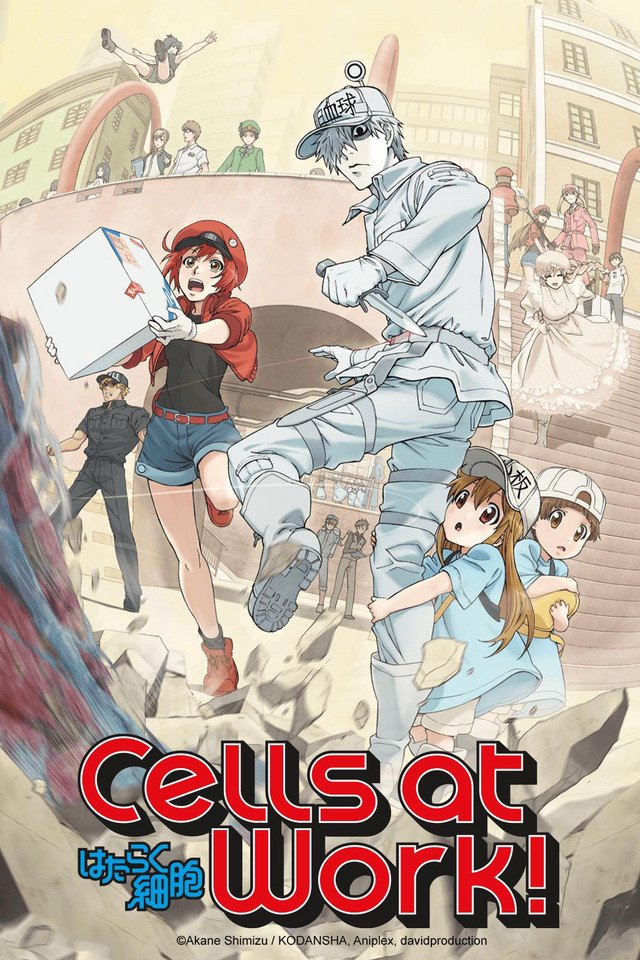
I’ve been keen on moe anthropomorphism since I first came across anime and manga, whether it be catgirls like in Hyper Police – the very first manga I ever bought – or odder things like countries in series like Hetalia. CAW! gave us anthropomorphic cells in our bodies, with characters like the clumsy Red Blood Cell who was constantly getting lost, the White Blood Cell who slaughtered bacteria invading the body, and the tiny adorable Platelets. I do admit there were some odd moments I was less keen on – like giving cancer cells a tragic backstory. One news story I read this year, was a study that said that the American cartoon series Rick and Morty was the TV series available for streaming that had the most deaths in it per episode. I’m slightly dubious of this story because they only made mention of American TV shows, and I wonder if some anime series might have more deaths (I’m planning on counting the deaths in Death Note to check). Regardless of this, while that show might be the most deadly, it is the education anime Cells at Work! which was certainly the most bloody.
Sarah:
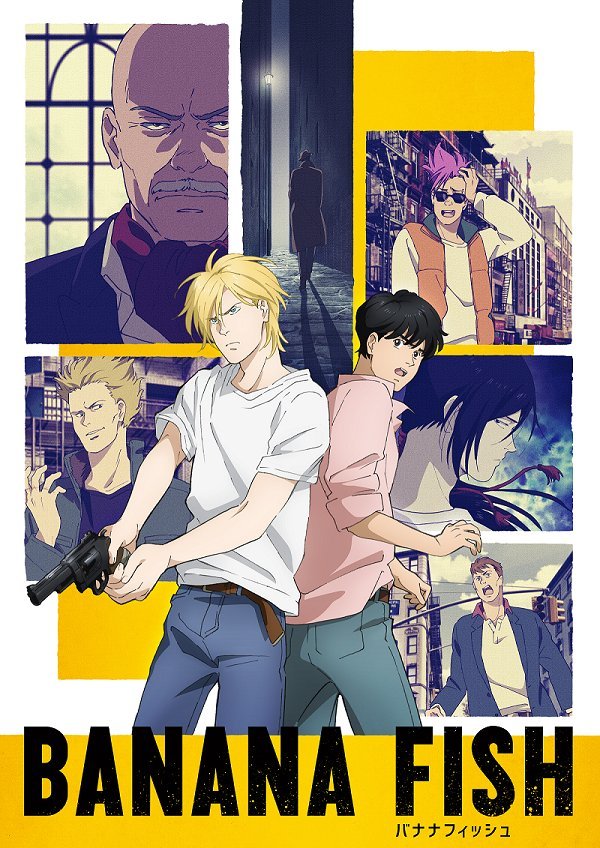
Banana Fish is approaching its bloody and tragic climax as I write (we’re promised a final episode with an extra 10 minutes from MAPPA). Banana Fish is set is the US and tells the story of two young men from utterly different backgrounds: one the New York gang leader Ash, the other, Eiji, a Japanese photographer’s assistant investigating. Ash is the tragic, sullied innocent, sexually abused as a child and raised by a Mafia don as his plaything, who has the innate charisma and brilliance to attract and command others. Eiji is the opposite: an innocent abroad whose caring and accepting personality makes him the ideal foil for Ash’s troubled brilliance. Drawn into a vile web of corruption arising from the lethal forbidden mind-altering drug Banana Fish, they find themselves caught between the police, the Corsican and the Chinese Mafia, as Ash’s rivals seek to settle old scores and Ash sets out to avenge his older brother’s death.
Many of those who have read the original manga (1987) by Akimi Yoshida are still praying that the studio will change the ending (it’s a very typical ending for the time it was first published and I’ll write more about the reasons for that when I’ve steeled myself and watched it through to its conclusion). This has been ‘The’ series of the year for me, with its (mostly though not wholly) successful updating of the manga, and some of the best OPs and EDs in a long while: Opening Theme: #1: “found & lost” by Survive Said The Prophet, #2: “FREEDOM” by BLUE ENCOUNT Ending Theme:#1: “Prayer X” by King Gnu #2: “RED” by Survive Said the Prophet. Add in some stellar voice acting and it’s been a compelling, gritty and heart-breaking watch. (Dir. Hiroko Utsumi, best known for the delightful Free! Iwatobi Swim Club.)
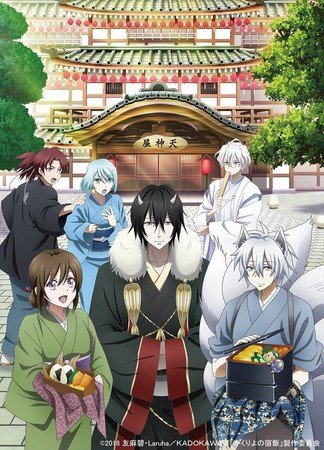
Kakuriyo: Bed & Breakfast for Spirits is a fantasy romance (with added cooking) about a young woman, Aoi, who is spirited away by a very handsome oni (‘ogre’) to his world where he runs a high-class inn. She learns that her late grandfather ran up rather a large tab there and promised her in marriage to the owner to pay off his debt. To the horror of the other employees at the inn, she refuses to marry Odanna-sama (the Master), choosing instead to work off the debt by opening an eatery outside the inn. And, of course, she’s a good cook, as the inhabitants of the yokai world soon discover. Engaging characters and well-paced story-telling make this an enchanting watch; the fantasy world is rooted in Japanese mythology with tengu, kitsune, flying ships and a very cute little kappa ‘Chibi’ who attaches himself to Aoi. And, of course, a relationship begins to develop between Aoi and the Master – but in rather an understated, subtle way; much of this series is about Aoi’s ingenuity and resilience (and, of course, cooking) on finding herself in a new and often hostile environment. Kakuriyo also boasts one of the more attractive and Openings (personally I prefer the first to the second) this year. An added bonus is the manga series which will be released from VIZ Media starting in the New Year. If you’re a fan of Kamisama Kiss, The Morose Mononokean or Noragami, then you’ll love this!
Anime Film Theatrical Screening
Darkstorm:
We in the UK were spoilt for anime film releases in 2017, and so I was expecting just as many (if not more) releases this year. We did not, although we did get some fabulous limited screenings and the Scotland Loves Anime go-ers got to see some fantastic UK premieres, I think what made this year not shine as brightly as 2017 is that a lot of the cinema releases were tied to long-running series (great if you love them, not so much if not) and the non-series tie ins were fewer and further apart in the year.
Anyways, what’s my pick for best anime cinema experience? As much as I loved seeing Code Geass on the big screen, my award has to go to Mirai. Mamoru Hosoda may not be everyone’s favourite director, but he’s certainly a talented and an emotionally invested one, and I really enjoyed seeing this movie, as well as getting the chance to attend the London-exclusive exhibition earlier this year. I hope Anime Limited bring this one to home media sooner rather than later.

Demelza:
This year I got to attend Scotland Loves Anime for the very first time and what a great first year it was! Among all of the movies I had the chance to see, my two favourites were both shown at Scotland Loves Anime and left a lasting impression. First up we have Penguin Highway, a tale of a young schoolboy and, well, penguins. Quirky and harbouring a great sense of humour, Penguin Highway succeeded in capturing my imagination in the ways I’d hoped Mirai would have. It’s a real shame that the script has a lot of boob jokes in it because otherwise this is a fantastic family film. I can’t wait for it to hit its cinema release so many more of you get to experience this playful story.
My second pick is I Want to Eat Your Pancreas, which despite the name is actually a coming of age romance story rather than a horror story as you might be led to believe. Now here at Anime UK News I’m well known for my love of Isekai and fantasy stories, but I have a soft spot for romance and I Want to Eat Your Pancreas delivers everything I could want. It doesn’t just do that though, it also gives you a gut punch of emotion which haunts you long after the credits roll. It’s difficult to talk about the plot without ruining it, so instead I’ll just finish off by saying please give this movie a chance if you have the opportunity to see it. The name seems silly but there is a heartfelt story waiting for you beneath it all.
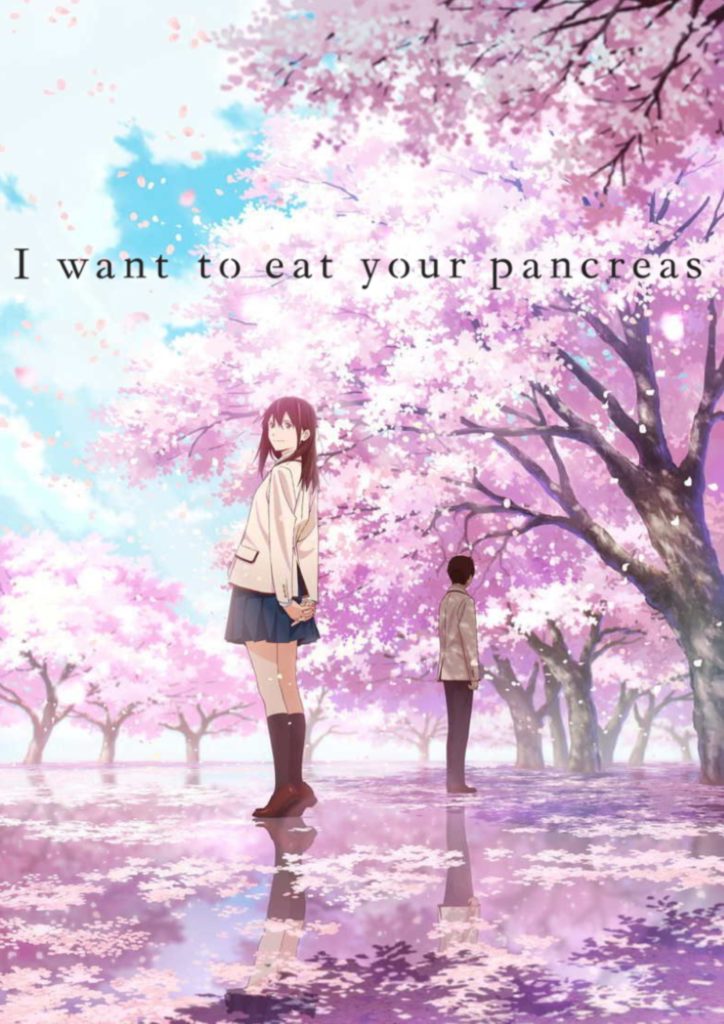
Josh A. Stevens:
After the near constant stream of films last year, with a new feature film hitting cinemas almost every (and sometimes multiple times) month, 2018 admittedly felt a little empty in comparison. The start of the year was packed with franchise fare like the live-action Tokyo Ghoul, then recap instalments for Attack On Titan and Code Geass. It wasn’t really until June that we received our first original anime feature film, and it was well worth the wait.
After establishing herself as a talented screenwriter with titles like Anohana: The Flower We Saw That Day and The Anthem of the Heart, Mari Okada finally made her long-awaited directorial debut with Maquia: When the Promised Flower Blooms. I must confess that I was initially drawn to Maquia due to character designer Akihiko Yoshida and a previous project of his, the Nintendo 3DS game Bravely Default, of which I am especially fond. This mundane motivation however, led me to discover one of the most emotionally resonant films I have ever seen.
A profound human drama set to a fantasy backdrop, the film opens with the story of the Iorph, a race known for their youthful looks and longevity. They live in tranquility, weaving history into tapestry far away from humans, until a kingdom invades in pursuit of their apparent immortality. Amidst the chaos, the timid 15-years-old Maquia makes her escape and while wandering alone in a forest, finds a survivor of a different massacre: a baby boy, still in the grip of his bandit-slain mother. Deciding that she will raise the orphaned child, Maquia names him “Ariel”, and the story of a lifetime begins.
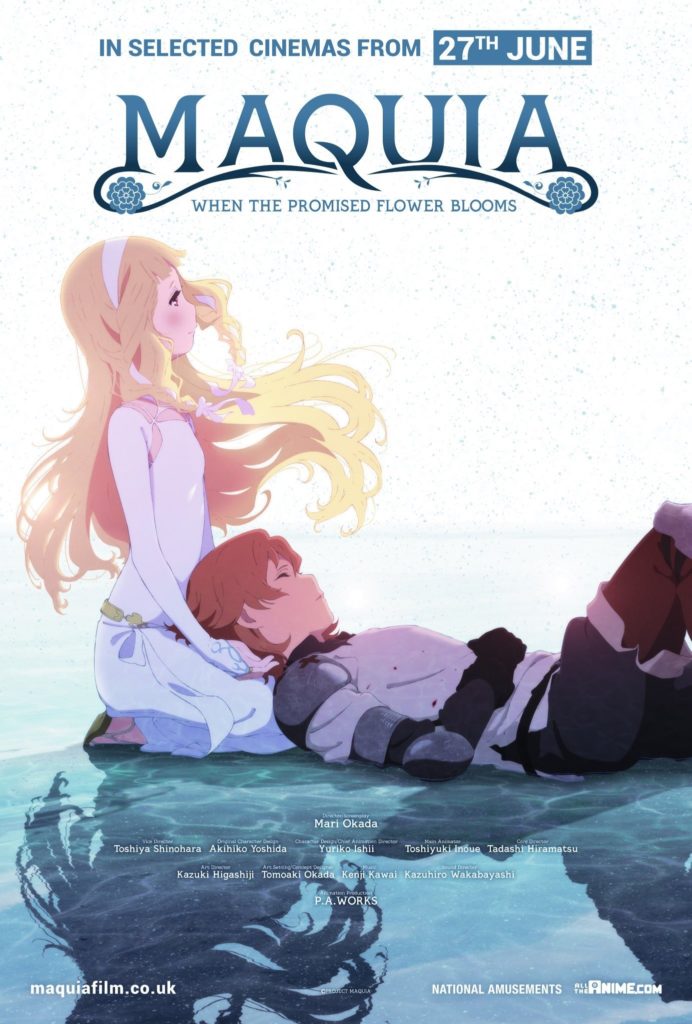
The film’s story takes place over many years as we watch Ariel grow from a boy into a man, while Maquia remains youthful. The age displacement understandably affects their relationship as it becomes harder to pass off as a typical mother-son relationship.
My enjoyment of Maquia was furthered by J-Novel Club’s English language release of Mari Okada’s autobiography, with the open revelations about her own relationship with her mother and its influence on works like Hanasaku Iroha adding a fascinating new perspective to the different dynamic seen in Maquia. Like how many consider Makoto Shinkai’s Your Name the culmination of themes explored in his previous films, perhaps the same can be said with Mari Okada and Maquia?
One of the only things I knew about Maquia before stepping into the cinema, is that the animation studio P.A. Works (Shirobako) supposedly wanted a film that was “100% Okada”. Having read her autobiography earlier in the year, where I learned of the frank revelations about Okada’s relationship with her mother and its influence on the likes of Hanasaku Iroha, I was able to appreciate Maquia from a whole other perspective. Like how many consider Makoto Shinkai’s Your Name to be the culmination of themes explored in his previous films, perhaps the same could also be said about Mari Okada and Maquia?
I was fortunate enough to speak with Mari Okada herself about the film, for an interview published earlier this year. It was a delightful, fun yet profound meeting and my personal highlight of the year. Her answers were thoughtful, and we were laughing throughout (which made transcribing it later difficult!). A touching tribute to motherhood, I’ve seen Maquia twice and despite knowing what was coming, cried both times and can’t wait to do so again. My main thought when leaving the cinema: Mums are pretty great, aren’t they?
My other theatrical highlight of the year was less about a single film, but more the experience of many. After many years of it being a pipe dream, I finally travelled up to the historic city of Edinburgh for Scotland Loves Anime for a long weekend! I was mainly drawn to the line-up’s inclusion of the coming-of-age drama I Want to Eat Your Pancreas, and like my colleague Demelza, I wasn’t disappointed. The story of Sakura, an outgoing young girl dying of a pancreatic disease and the quiet boy she ropes into fun escapades to clear her bucket list, the film was surprisingly life-affirming despite its subject matter. I Want to Eat Your Pancreas was packed with emotion and even black comedy! It’s no surprise it went on to win the Audience Award!
Perhaps my favourite film of the festival however, was the romantic comedy Haikara-san: Here Comes Miss Modern – Film 1. Adapted from a 1970s shojo manga set in 1918, the film is a period piece in multiple ways. A tomboy in an era with traditional (see: backwards) views of feminity, Benio Hanamura doesn’t exactly respond kindly when her army father arranges for her to marry the handsome Shinobu Ijuin. Benio even moves into the Ijuin family home to try and sabotage their engagement from within by making everyone dislike her, but in typical romance fashion, the opposite happens!
Despite the mid-Sunday showtime attracting a smaller crowd than other films at the festival, Haikara-san‘s audience was the loudest with roars of laughter throughout. While full of situational comedy like the Ijuin’s sexist patriach getting whooped in a kendo match, Haikara-san also has great visual gags like Benio and her father repeatedly banging on a table during an argument, causing an object on top to erratically jump back and forth like a game of tug-of-war. Benio is also a delightful drunk – and she definitely charmed the Anime UK News team, as her film won the Anime UK News Jury Award by a landslide! While the ship has sailed on a theatrical release, I’d love to see the film and its sequel picked up for home video release here.
Onosume:
Outside of Scotland Loves Anime, 2018 saw the UK side of the anime industry step back from the abundance of films it put in cinemas last year, mainly focusing on select big hitters such as Maquia and My Hero Academia: The Two Heroes. While these are decent films, it was at Scotland Loves Anime that I found my two favourites: Penguin Highway and Haikara-san: Here Comes Miss Modern.
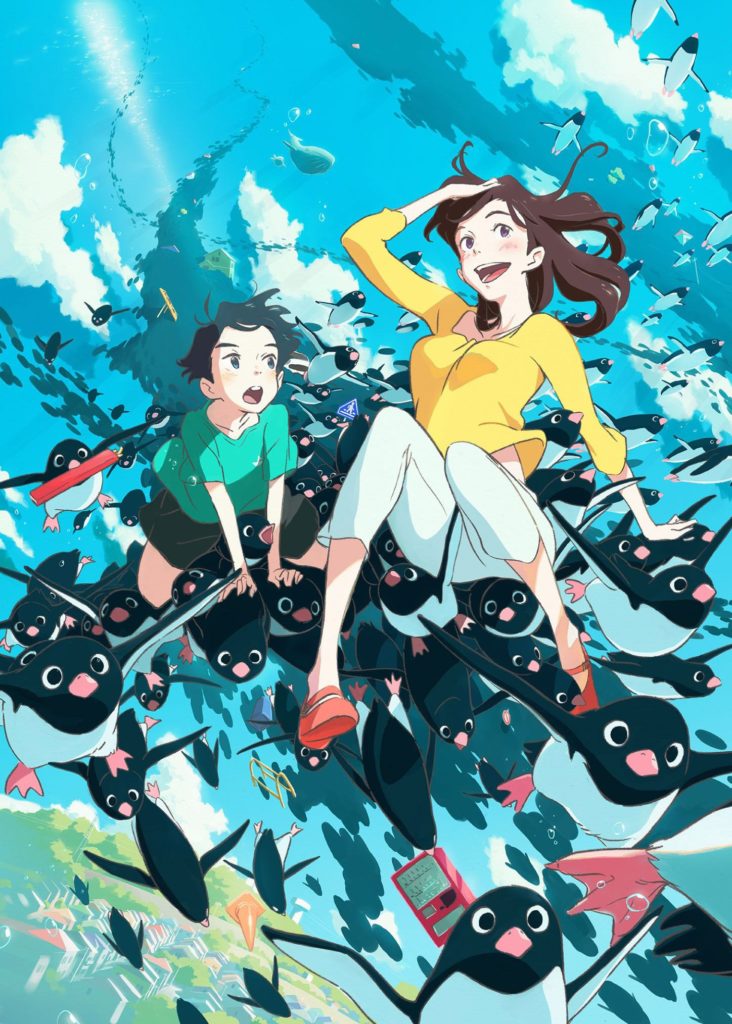
Despite it feeling a little long in certain sections, I really loved Penguin Highway for its sheer silliness of a group of kids chasing after a load of penguins and the larger mysteries involved with the big blob of water and the mysterious woman who works as the dental nurse. It’s very much a story about growing up and seeing the world through the eyes of the 10-year-old Aoyama, who has a very inquisitive nature. He’s often seen making notes in his notebook and trying to figure out what’s going on, which kind of makes him seem smarter than he is, when his two friends are actually the ones to take action and advance the plot. Both are underplayed but, in a sense, come off as stronger characters than Aoyama on some occasions.
It’s a great first theatrical effort from Studio Colorido though; they have been around for quite some time and have made their name doing animated adverts as well as contracting on other productions so it’s about time they got their own big production. I really liked the animation work, particularly with the way the penguins transform out of and back into cola cans.
Overall it was a really good adventure and I’m really looking forward to what they can do in the future as if this is anything to go by, then they can really mix it in with some of the more big-name studios.
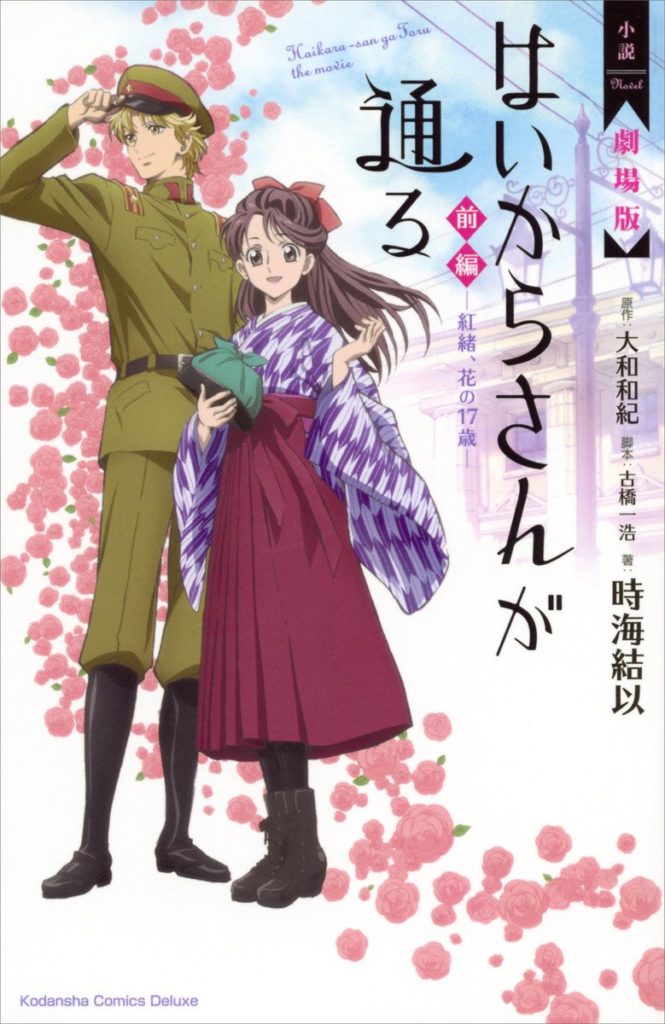
Haikara-san: Here Comes Miss Modern however really took the crown as best film of this year’s festival and it is criminal this wasn’t up for an award. For how much I enjoyed it it reminded me I don’t watch as much ‘traditional’ shojo anime as I should as it really showed the best of the genre without some of the overbearing trappings and tropes that a lot of shojo stories come with. While the overall story is very charming, the real strength of the film is definitely its characters as it creates a bunch of people you can really believe in and how they interact with each other is well thought out.
Leading lady Benio is particularly very strong and I really liked the idea of her wanting to forge her own way in the world and live her own life despite the particular views of a woman’s place in the world in the late Taisho era of the 1920s. But it’s not just her – from Shinobu, the guy who she’s supposed to be marrying, to her friends, her family members and even the rickshaw guy who she picks up when she tries to run away.
It’s a delightful film and I hope we see a UK home video release of both this and its sequel.
Anime DVD/Blu-ray
Darkstorm:
Admittedly, I was a bit disappointed in this year’s releases. That’s not to say it was a bad year for anime; we had lots of big-name releases from Attack on Titan to Yuri On Ice!!!, but then there were a lot of dud releases (Flip Flappers for example) that seemed to be merely fillers for the year. There were little surprises, which was a shame, and lots of great license announcements but they seem to be for next year.
Anyways, my pick for this year is Vampire Hunter D Bloodlust; Anime Limited’s release may not have been perfect but it was great to get reacquainted with this classic and it made me realise that not only have I missed the old school gothic horror vibe, but that we have not had a decent horror anime film in years, brand new or rescued old ones. I’d love to see that changed next year.

Demelza:
Sadly, my opinion of home video releases this year is not dissimilar to Darkstorm’s. Although I bought more anime this year than I did in 2017, the vast majority of my purchases were finishing off series already being released like Hyouka and Durarara!!. Having said that, I was still incredibly happy to see Anime Limited release Grimgar of Fantasy and Ash on home video because while it’s just another series in the packed isekai genre, it brings with it a more realistic take on what it means to adventure in lands unknown. When the series originally aired it wasn’t easily accessible to watch in the UK either, so this home video release was the first chance many had to check the show out.
The other series I was happy to see be given a release (this time by MVM) was Girlish Number which follows the adventures of voice actors working in the anime industry. I love this comedy series and I’m always happy to see more tales of the industry (even if they’re largely dramatised like Girlish Number); perhaps someday we’ll actually get to see Shirobako licensed in the UK…?

Josh A. Stevens:
Due to the increasing popularity of streaming and theatrical releases, I’ve admittedly found myself buying less home video releases each year – and seldom finding the time to watch the ones I have! I was however, pleased to see a classic franchise return with the shiny new Lupin the 3rd: Part IV from Anime Limited.
Co-financed by companies in Japan and Italy, the revival of Japan’s iconic phantom thief sees Lupin the 3rd travel to the European nation… to get married?! The world’s number one thief just can’t keep his hands to himself however, and rather than settling down, sets out to plunder riches anew! This soon attracts the attention of INTERPOL detective and long-time rival Koichi Zenigata, who is determined to catch Lupin once and for all.
Don’t let the title dissuade you – Lupin the 3rd‘s continuity is about as rigid as The Simpsons‘, making it totally accessible to newcomers. I loved the series when it was streaming, finding it to be a perfect show to just sit back and enjoy the action unfold. The series was continued this year with the airing of Part 5 (the styling’s as inconsistent as the lore!), so hopefully this renewed interest leads to Anime Limited picking up the classic seasons later on.
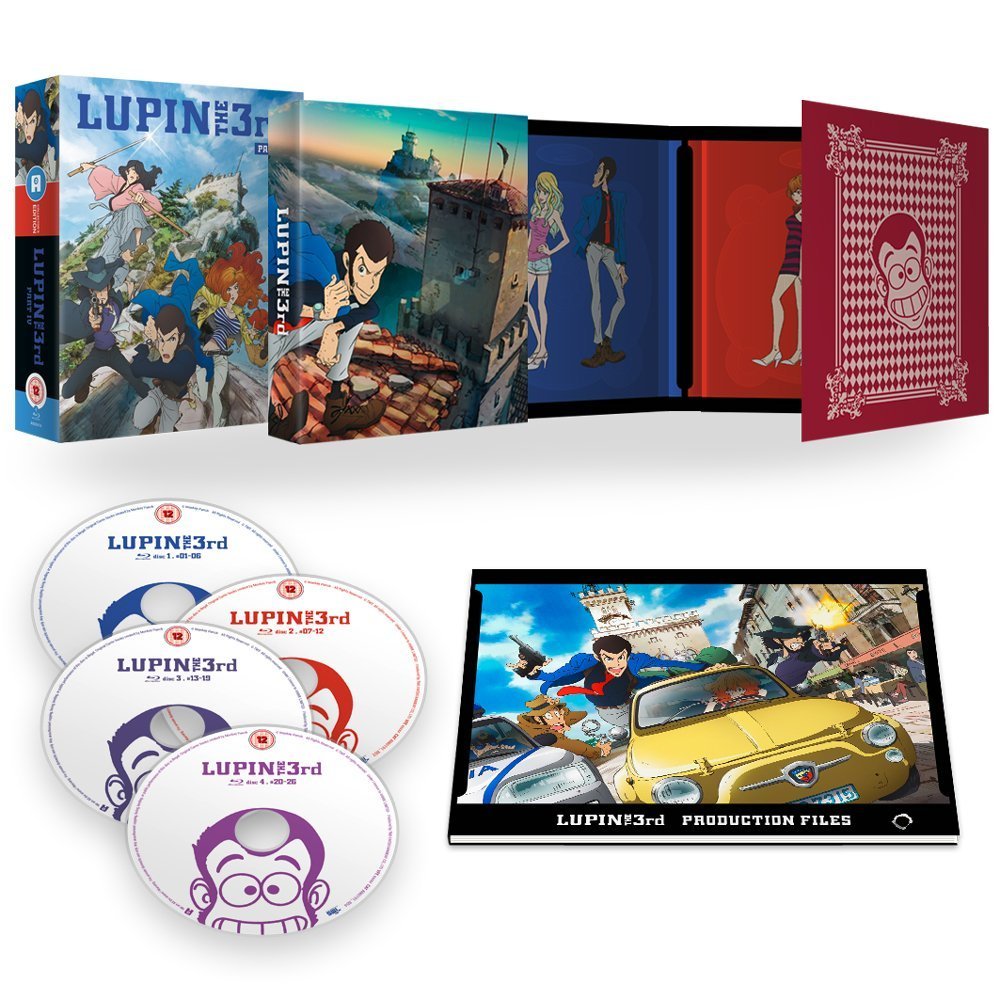
The Collector’s Edition is sturdy and stunning, but anyone hoping to watch the series with an English dub may need to wait a bit. Due to the English dub being based on an Italian cut with different timings than the Japanese video, Anime Limited decided to release their Collector’s Edition with Japanese audio only. They have announced plans to release the English dub later down the line, with Collector’s Edition buyers able to acquire it for the reduced price of £10, but at time of writing, we have yet to hear more about this scheme.
2018 also saw quite an unexpected development – with distributors Manga Entertainment and Anime Limited collaborating on not just one release, but two! For years, fans have asked for a Blu-ray release of the Ghost in the Shell: Stand Alone Complex anime series, and Manga Entertainment delivered. Back in June, the company released all 52 episodes of the series, the two recap films and the movie sequel in one enormous Collector’s Edition set. What made this release even more exciting for us nerds who follow the industry ins and outs however, is that the packaging was based on that released in France – by Anime Limited! I’m ashamed to admit however, that my copy still remains in its shrink wrap… it’s been a busy year for me!
The two collaborated again later this year, this time with a release by Anime Limited. To celebrate the 20th anniversary of Sunrise’s iconic space western Cowboy Bebop, the distributor will be releasing an “Ultimate Edition” of the series after Christmas. Stored in a fancy and expensive flight case, the release not only includes the full series on Blu-ray, but the release will also include the movie – which was re-released last year by Manga Entertainment! Who says companies can’t get along, eh?
Onosume:
With seasonal anime, I often watch everything as it airs, so I only tend to buy my favourite series on disc, but I also find myself buying more films as they are easier to consume in a single sitting around the seasonal stuff.
My two favourite home video purchases this year then have been Night is Short, Walk on Girl, my favourite film from last year’s Scotland Loves Anime, and Sound! Euphonium, a show that I was eager to support the release of due to both my fondness of it and the difficulties the Anime Limited team had getting it to us.

Night is Short has become my favourite of Masaaki Yuasa’s films due to how silly and funny it is, and although I’m not much of a drinker myself, I can relate to the situation better for having seen friends get unwisely wasted during my university days (drink safely folks!). For those who haven’t seen it, the basic premise is that the film follows this girl who goes around drinking the night away, while the guy who likes her follows her around as he tries to ask her out, but they both get involved in all kinds of shenanigans. It has a slightly episodic feel as there are three or four core stories in here, but each one just ramps things up from the previous one, with the highlight being the guerrilla theatre segment, where the guy is chasing around a bunch of characters he meets earlier in the film, as they’ve roped the girl into becoming one of the characters in their play. It’s really fun and a bundle of laughs and is an easy one to re-watch.
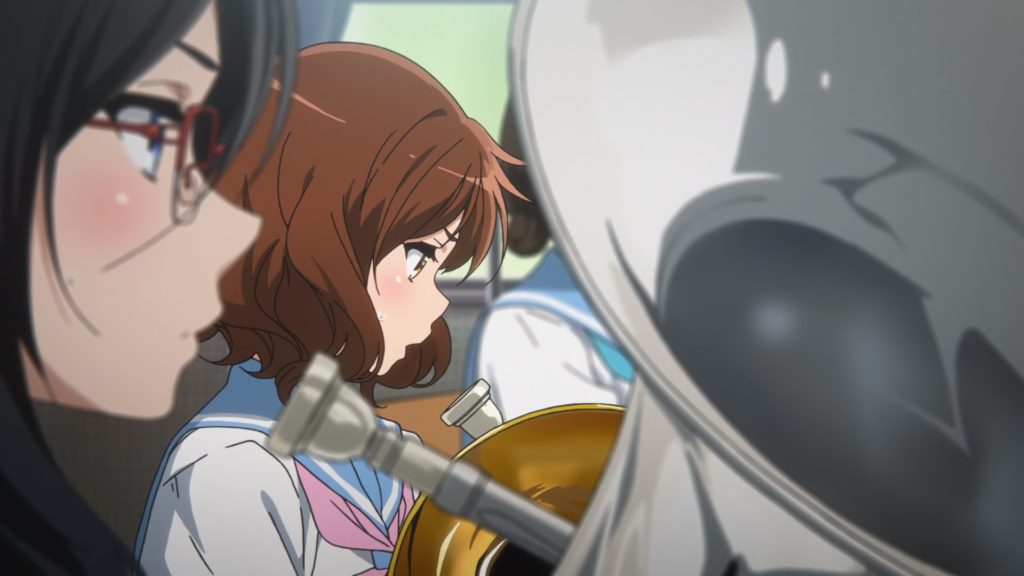
Sound! Euphonium is a show that I really enjoyed when it aired, so when Anime Limited announced that they had secured the license after it first being dropped in licensing scuffles, I was immensely pleased to be able to add it to my collection. It just ticks a lot of the right boxes for me: Kyoto Animation show; emotional story; cute girls doing cute things; something to do with music, using traditional instruments; a little bit of yuri-bait… The list goes on. With our own IncendiaryLemon giving the series an incredible 10/10 there’s little I can add to the praise for this show that we’ve already stated; but from a personal point of view it was the focus on more classical music (albeit a bit more US-influenced) that really attracted me to this series. With my Grandad being in a local brass band I grew up with quite a bit of classical influence, so in terms of music it was hitting all the right strokes for me. And I think that goes for anyone with a passing interest in music, for as well as being an excellent slice-of-life show, it’s had a lot of care and attention put to it over the finer details which I certainly appreciate.
Cold Cobra:
Much like a lot of my fellow writers, most of the anime I brought was 2017 or earlier titles that ended up on sale, but I will echo Josh A. Stevens above me and mention Manga’s release of the entire Ghost in the Shell: Stand Alone Complex in one rather lovely box:
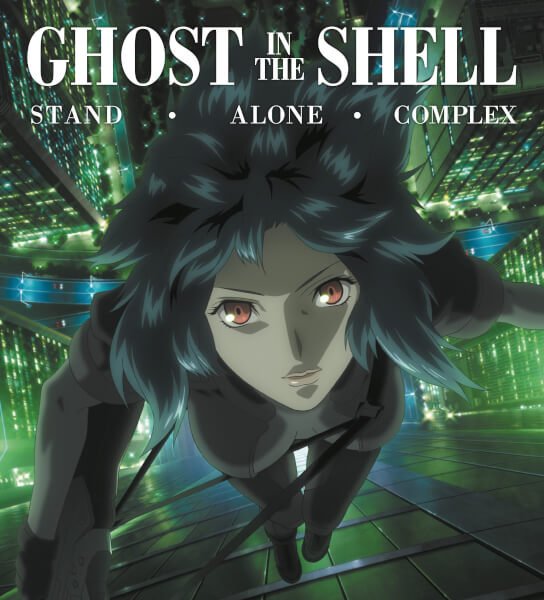
It has all the discs housed in sturdy cardboard sleeves, with artwork adorning each of the “pages” of discs, plus a nice booklet going into detail on the series as well as a complete episodes guide and more. Sure, I was a little annoyed when Manga released a standard edition shortly after, but when I see the Collector’s set proudly standing on my shelf, I’m happy with my choice.
Ian Wolf:
For me the anime releases have all been about beginnings and endings. Although certainly not the best anime I watched, the most important one I saw was Momotaro, Sacred Sailors – the very first anime feature film ever released, and one of very anime ever brought out in the UK in black-and-white. It was also a WWII propaganda film aimed at children, so it made for disturbing viewing.

In terms of endings, the last releases of Assassination Classroom and Love, Chunibyo & Other Delusions! came out. Both had qualities that made them stand out. With Assassination Classroom it was the plot and thrill of the story; with LC&OD! it was the characters, the comedy and the quality of the animation that made them a delight. Both ended with film releases, but Assassination Classroom’s film was just a compilation movie, while LC&OD! presented a thrilling chase and the blossoming of true love.
Many endings also turned into new beginnings. We had the final DVD release of Fairy Tail… for now, but the series has returned and the final season is currently streaming. With the UK’s One Piece collections, there were ups and downs. On the downside were sequences that I felt were arguably homophobic, but on the positive side we had the most thrilling point in the series – the key moment where everything changes in the life of Monkey D. Luffy.
Looking Forward: Things to Come in 2019…
Darkstorm:
I hope 2019 brings a few more non-series tie-in films and more variety of unique movies, whether they be whimsical family adventures, new breakthrough in horror, or just random-wacky experiments. At the moment I’m already excited for Penguin Highway when it reaches its UK cinemas, I’m also hoping that the first Fate/Stay Night Heaven’s Feel movie will get a sneaky cinema screening before its home release.
As for streaming, I want second seasons of Aggretsuko, Wotakoi, Kakeguri and Cardcaptor Sakura: Clear Card pleaseeeeeeeeeee? Also, well done Netflix for picking up Neon Genesis Evangelion; I’m looking forward to seeing what impact the series will make with a new generation of fans.
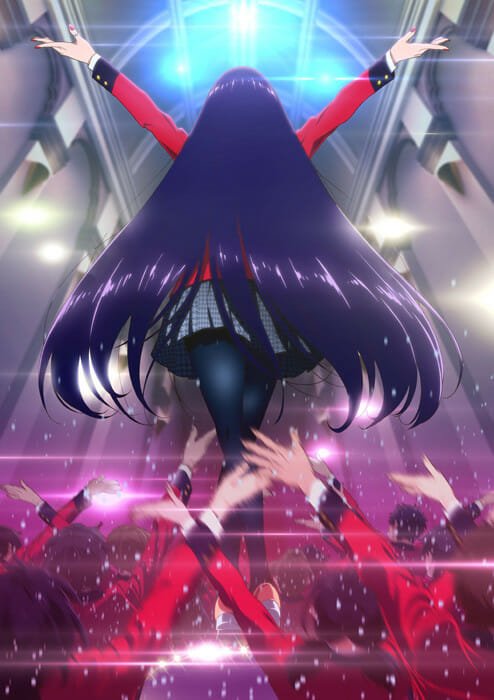
Demelza:
Looking forward to 2019 I can’t wait to see what the Is It Wrong to Try to Pick Up Girls in a Dungeon? and Konosuba films bring to the table (hopefully a Season 3 in Konosuba’s case!) and there are some adaptions of popular Weekly Shonen Jump series to look forward to as well, like The Promised Neverland.
I’m also really looking forward to seeing more of That Time I Got Reincarnated as a Slime and Sword Art Online as both currently airing series continue into next year. I’m going to finish off by saying that I totally back Darkstorm’s desire for a second season of Wotakoi – surely that has to happen. Right?
Josh A. Stevens:
As I tend to discover original titles during the seasons they air, I’m not sure if there’s anything I’m looking forward to right now that isn’t a sequel. I am hoping however, that Satelight’s Symphogear XV gets picked up for the Summer 2019 season (having recently been delayed from Spring); although the fate of last year’s unlicensed Symphogear AXZ doesn’t inspire me with confidence. Despite its title having the roman numerals for 15, Symphogear XV marks the fifth series in the franchise, which I like to affectionately call “The Fast and the Furious of Magical Girls”, because the series isn’t just ridiculous – it knows it is!
Hibiki Tachibana was just a normal cheery schoolgirl until a concert she attended was attacked by alien-esque creatures called “Noise”. She barely made it out alive, thanks to the sacrifice of Kanade, a “Symphogear” user who harnesses the power of ancient relics… through catchy J-Pop! When a piece of Kanade’s relic embedded in Hibiki’s chest awakens following a Noise attack two years later however, she must join the fight to protect Earth. Joining fellow Symphogear users like pop idol Tsubasa and the trigger happy Chris, Hibiki has fought aliens, alchemists and the naked Shinichiro Miki-led Bavarian Illuminati, making new friends and foes along the way – but what awaits her in the next battle?
While the latest series wrapped itself up nicely for the most part, the finale teased an upcoming major role for Hibiki’s best friend Miku, tying back to events all the way back in 2013’s second season, Symphogear G. Having remained mostly on the sidelines since the incident, that saw her coerced into wielding a Symphogear of her own. I just hope I get the chance to sit back and enjoy more of this bonkers thrillride, because what’s not to love about cute girls killing aliens while powered by J-Pop? The first three seasons are available to stream on Crunchyroll, while the fourth currently remains unlicensed.
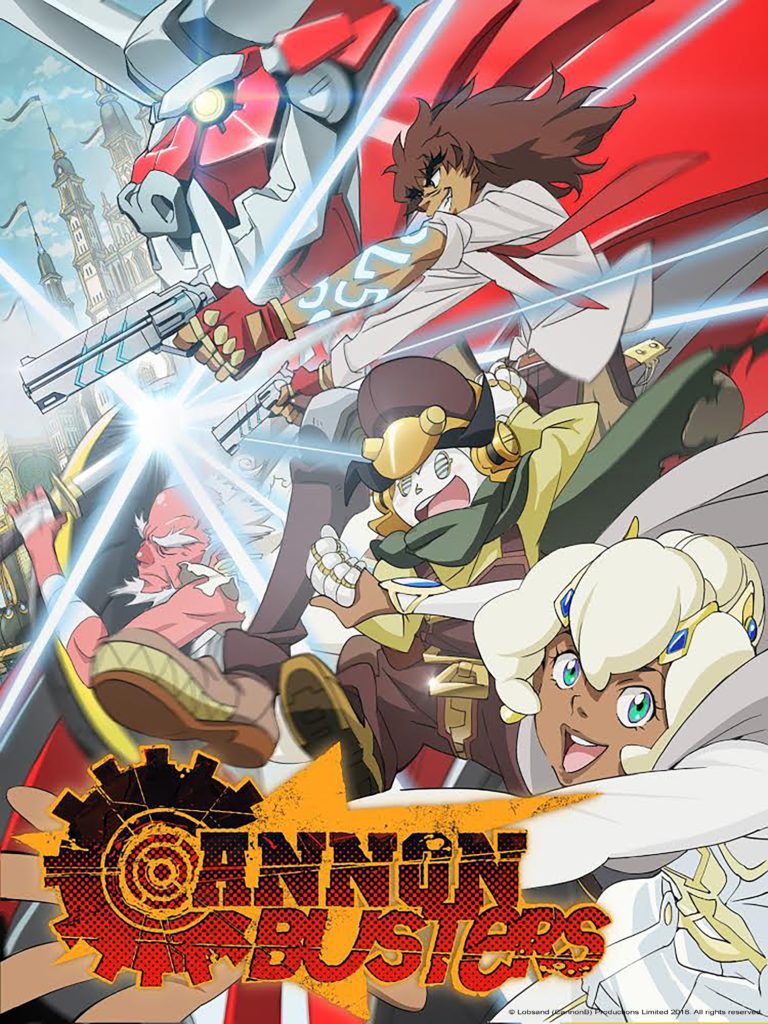
Symphogear isn’t the only series from the Satelight animation studio that’s peaked my interest, however. March will finally see the Netflix debut of Cannon Busters, an adaptation of LeSean Thomas’ comic book series that marks the first major co-production from Manga Entertainment. As the anime medium becomes more of a global industry, I can’t wait to see what impact more creatively and culturally diverse stories will have on anime.
The theatrical front is more quiet right now, but depending on how the currently airing Rascal Does Not Dream of Bunny Girl Senpai concludes, I may find myself yearning to watch its already-announced follow-up movie, whose title is currently translated as Rascal Does Not Dream of a Dreaming Girl. With the film being a sequel to an already niche show however, I can’t see myself getting the opportunity to experience it on the big screen, with the exception of an unlikely Scotland Loves Anime appearance.
Onosume:

Looking into 2019, the big one for me is Love Live! Sunshine!! The School Idol Movie: Over the Rainbow. This sequel to the ever-popular Love Live! idol anime is set to conclude the story of the girls from Aqours and sees them heading to Rome as they try to track down Mari, who according to the trailer is supposedly getting married, as well as discovering what the group means now the graduated third years have left and they’ve moved to a new school. While Sunshine as a whole was a bit hit-and-miss, the second season of the anime definitely carried things forward and at least tried to differentiate it from the original. I do love the characters though and I’m eager to see how things have moved on now their school is closed and to discover how far it can step out of its elder sibling’s shadow. The movie opens in Japanese cinemas on January 4th, and with the success of the first movie at Scotland Loves Anime (and to remember the legend of the person who whipped out glowsticks during the screening), I have high hopes for this being at Scotland Loves Anime 2019.

Looking at seasonal streaming anime, there’s a lot of good-looking stuff already confirmed; but one I think will fly under people’s radar a bit is the second season of Kemono Friends. Admittedly, this one is a bit controversial due to the way Kadokawa threw the original creators of the anime series under the bus, but I still want this to be good as I loved the original a lot. Speaking of the original, this doesn’t seem like a direct follow-up and is instead its own separate story, dropping Kaban for a new human character. While the animal friends are really funny, having that human element really helped in connecting to the series, so I hope Kaban’s replacement is just as good. I do have high hopes for this though, particularly with the director of Aikatsu!, Ryuichi Kimura, being on board. With Aikatsu! under his belt, Kimura should have a good knowledge of how to deliver a successful kid-friendly anime while still delivering elements that also appeal to adults, so I think the show is in safe hands. Either way, we’ll find out when Kemono Friends Season 2 airs on January 7th.
Cold Cobra:
I’m afraid I’m often at the whim of the people when it comes to shows or adaptations that are more obscure, but there are a few new entries in franchises dear to my heart next year. The first and most obvious if you follow this site at all would be the Dragon Ball Super movie, arriving here in January. Simply titled “Broly“, it’s Toriyama taking what was done with the character back in the non-canon movie from the 90s and writing him into the story officially. In doing so he seems to have gone a bit crazy with the backstory to not just Broly, but Goku too, as his father Bardock is seen in a completely different way from what we saw in the classic TV Special, and closer to his poorly-received-by-parts-of-fandom Episode Minus manga chapter from a few years ago.

Other things of note are: the start of adapting Mobile Suit Gundam: Hathaway’s Flash into a trilogy of films at long, long last. It seems like ages ago when I saw the designs for the two Gundams that appear in it and, wanting to see the story proper, I’m really excited to see this pulled off, hopefully with the same finesse as the Unicorn adaptation. As you can see in the Streaming section, Season 4 of My Hero Academia and the rest of Season 3 of Attack on Titan are also highly anticipated by myself. Lastly, I’m looking forward to those things I don’t know about yet. A new streaming show takes off? An unexpected physical media release? Something even more out of the blue? Sometimes those things you don’t see coming are the best.
Ian Wolf:
There are certainly some DVD releases I’m keen to see. I love CLAMP and, having reviewed Angelic Layer this year, I’m keen to get my hands on Anime Limited’s release of Magic Knight Rayearth. Their planned release of Revolutionary Girl Utena also interests me, and I’m keen to see the return of The Melancholy of Haruhi Suzumiya on Blu-ray. However, in terms of brand new anime, the one I am most interested in seeing is the planned release of the Yuri!!! on Ice film Ice Adolescence. Given all the hype of the original series when it went out in 2016 (was it really that long ago?) I hope the film lives up to expectations.
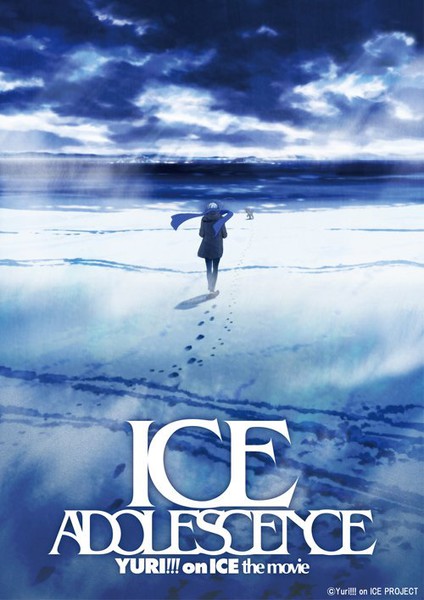
Sarah:
Looking Forward: Things to Come in 2019…
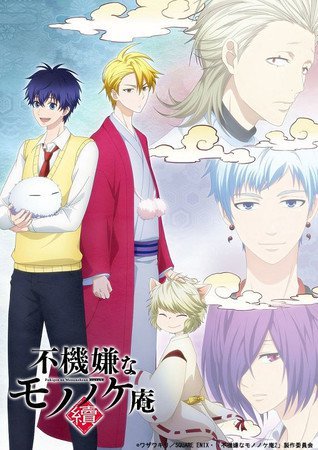
A welcome return – for a Second Season – is supernatural series The Morose Mononokean, with new director and new character designs (hmm, not so sure about those yet…) and one of the fluffiest, cutest yokai companions. (Do I have a thing for cute yokai companions…?)
But I’m really excited (even though I love the original anime) for the new adaptation of Natsuki Takaya’s shojo classic Fruits Basket which promises to cover the whole series (so that’s a lot of material to squeeze in!) The manga was very much ongoing when the first adaptation was made (2003) with key plot and character reveals then yet to come – so I can’t wait to see what the creative team will bring to the project (new music and new voice actors too!).
